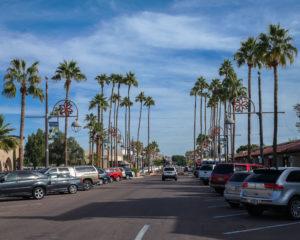On behalf of the Coalition of Greater Scottsdale, a collection of mostly slower-growth community leaders, Betty Janik conveyed caution about more height and development in the city, in a thoughtful, recent guest column. Click here to read.
Agree or disagree with her, Janik’s respected voice is one that enriches discussions in the public square.
But we take exception to Janik’s criticism about the proliferation of bars in Old Town. That should not be a surprise. We have opined frequently over the years how the successful Entertainment District on the east side of Scottsdale Road is one of the city’s great success stories. It has aided tourism and economic development. People now seek out Scottsdale more because the sidewalks do not roll up at sundown. The ingenuity of entrepreneurs there is something to celebrate not bemoan. The Entertainment District has also aided the revitalization of the Galleria from white elephant into thriving tech offices. Furthermore, momentum begets more momentum. The energy of the bars has created a surge in restaurants much like the San Diego’s Gaslamp Quarter. That’s a good thing, not a bad one.
However, we do think Janik makes a good point about “arts districts” but offer a response in a somewhat roundabout way.

Main Street is Scottsdale’s pre-eminent arts street. Any city would be lucky to have something like it. But once upon a time there were two great arts avenues in the city, and that would have included Marshall Way between Indian School Road and 5th Avenue. And while still interesting it is no longer in its prime. But that’s not because of height or bars or inadequate parking or anything other than loser landlords, flight to Phoenix and changing tastes. In other words some bars in and around Marshall Way have actually left the area and there have been no big buildings built nearby. Yet, it has declined, transitioning to offices, hair salons and other uses.
In the past few months some Main Street area merchants have raised the specter that new development there could hurt the area, just as Janik did. But this is belied by what was just described about Marshall Way. In fact, you could make a strong argument that if nothing is done in the Main Street area it will eventually decline just like Marshall Way. And no one wants that to happen.
So, what is the solution? We think it is, as Janik alludes, that up-zoning, height and density should only be allowed if there is a greater good or, as she says, “unless there are significant benefits to the city.”
Gallery owner Scott Larsen basically made this case in his own recent opinion piece. 
He, like Janik, suggests there is good development and bad, and spells that out in some detail.
We concur. In downtown, like elsewhere in Scottsdale, there are great proposals and it’s no secret we believe the proposed Museum Square among them. The architecture. The open space. The financial benefits. The hotel. The elements are impressive. But we concede Janik’s point that currently there are some real stinker projects being proposed in the area too.
To Janik’s credit she invites a quality not quantity approach when it comes to development projects. From our standpoint we think height does make sense in some parts of Old Town Scottsdale, but not others. We think it can make sense in the Airpark area when it does not intrude on the airport or along the 101 Freeway for new offices and corporate headquarters. We don’t think height will ever make sense in northern Scottsdale, especially in proximity to the McDowell Sonoran Preserve.
Some citizen critics like to compare Scottsdale to Paradise Valley. Why does PV keep densities lower but Scottsdale doesn’t always follow suit? Because Paradise Valley has massive resorts that generate huge tax revenues. It is highly unusual in this regard. Think Las Vegas with gaming. Or Alaska and Texas with oil. It’s a different ballgame. Most cities, Scottsdale included, must develop or redevelop to sustain their economies and tax revenue. But they must do so, as Janik observes, without losing their soul.
Does anyone think, for example, that the Scottsdale Waterfront didn’t spark important, dynamic activity along the Arizona Canal? Has the architectural significance of Optima not enriched downtown?
We feel confident Scottsdale can thread this needle, especially with leaders like Janik paying attention.

